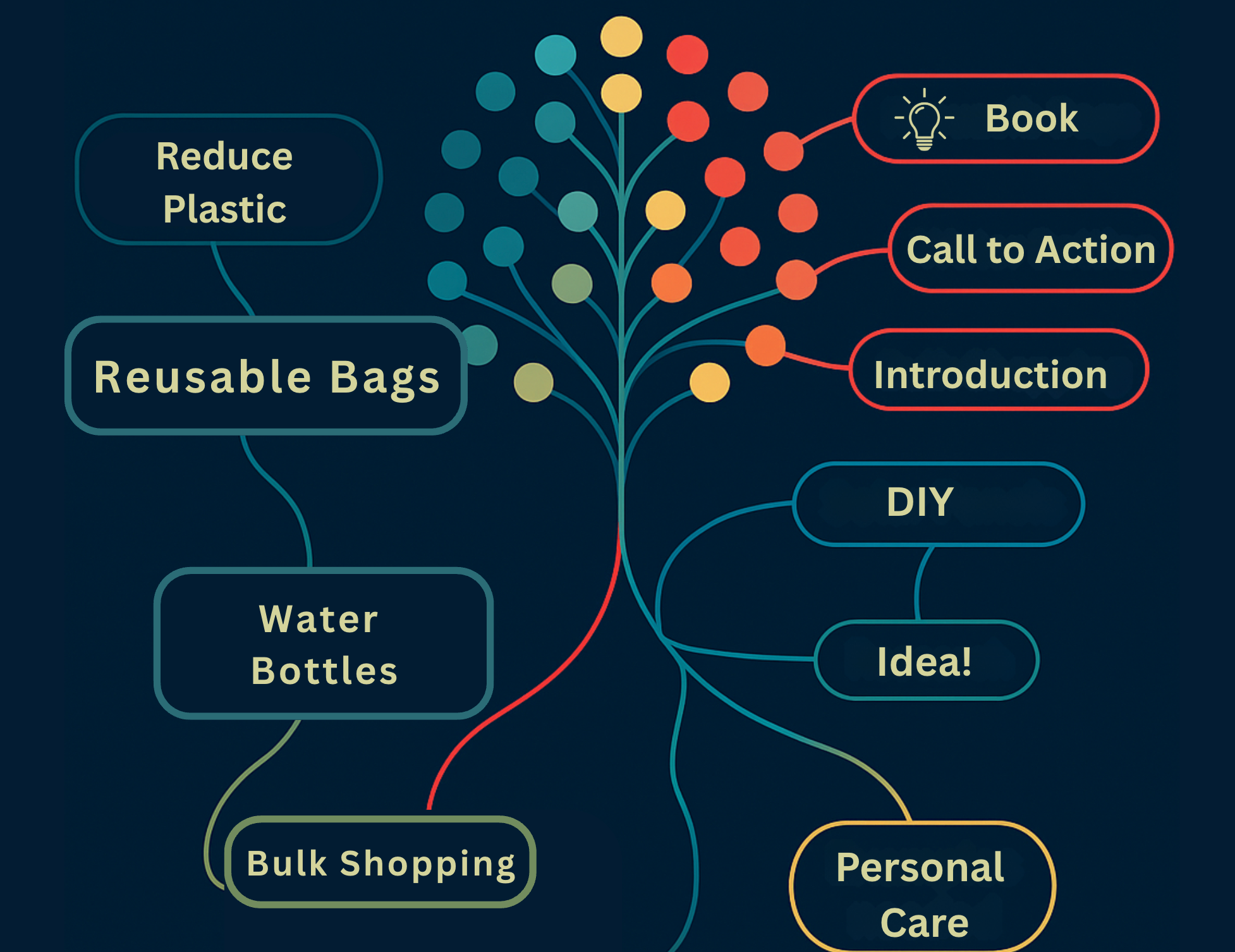How Mind Maps Turn Brain Dumps into Brilliant Content

Great ideas rarely arrive in a neat pre-packaged outline with a snappy title. They burst forth in fragments: a fleeting thought during a walk, a mumbled voice memo, a hastily scrawled note, a link saved in a rush. The challenge often isn't finding ideas, but transforming that chaos into publishable content.
This is where the humble mind map becomes your secret weapon. It’s a powerful visual tool that mirrors your brain’s natural, non-linear way of thinking, allowing unstructured ideas to flow into a coherent, organized structure without friction. Forget rigid outlines and forced linearity; mind mapping embraces the organic emergence of content.
The Problem: Idea Fragmentation
- Lost Connections: Individual ideas remain isolated, preventing you from seeing the bigger picture.
- Overwhelming Feelings: The sheer volume of disparate notes can feel daunting, leading to analysis paralysis.
- Writer's Block: When it's time to create, you struggle to synthesize these pieces into a cohesive narrative.
- Missed Opportunities: Valuable insights hidden within your raw notes never see the light of day.
The Solution: Mind Maps – Your Brain's Visual Playground
A mind map starts with a central topic and branches out with related ideas, much like a tree. This visual hierarchy helps you understand relationships, identify gaps, and discover new connections. It's a living document that grows as your ideas evolve.
Here's how mind mapping demonstrates "From Chaos to Clarity" for content creation:
Workflow 1: Brain Dump to Branches
- Start with your core idea as the central node of your mind map. Don't overthink it; just get the main theme down.
- Without concern for structure, start adding all your raw notes as initial branches radiating from the central topic.
Example: If your central topic is "Sustainable Living," initial branches might be "Composting," "Reduce Plastic," "Solar Panels," "DIY Cleaning," "Local Food."
- If you have voice memos, quickly transcribe the key ideas or listen for recurring themes. Add these as new branches. Don't worry about perfect sentences, just capture the essence.
- For saved links, quickly skim them and pull out 2–3 key takeaways or ideas from each. Add these as sub-branches or new main branches, perhaps with a small icon to indicate a link source.
- The crucial part here is to maintain flow. Don’t stop to categorize or refine. Just get everything down. This mimics the rapid-fire nature of your thoughts.
Workflow 2: Connecting the Dots
- Look for branches that naturally relate to each other. Drag and drop them to become sub-branches of a new, more encompassing main branch.
Example: Under "Reduce Plastic," you might have sub-branches for "Reusable Bags," "Water Bottles," "Bulk Shopping," "DIY Personal Care."
- As you group, new themes or categories will emerge organically. These become your main branches, or even higher-level nodes.
For each branch, consider:- What are the supporting details?
- What questions does this idea raise?
- What evidence or examples do I need?
- Use colors to highlight related themes, prioritize ideas, or mark areas needing further research. Add small icons for clarity (e.g., a lightbulb for an idea, a book for research, a person for an anecdote).
- As you organize, you'll naturally spot areas where your ideas are thin or where you need more information. Just make a quick note—these become clear research tasks for later.
Workflow 3: Content Outline
- The mind map now serves as your dynamic, visual outline.
- Each main branch can easily become a major section or heading in your blog post.
- The sub-branches provide the natural structure for subheadings, bullet points, or paragraphs within each section.
- Because you've visually connected ideas, the narrative flow becomes much more apparent. Rearranging branches with a simple drag-and-drop makes optimizing structure easy.
- Mark specific branches as "Call to Action," "Introduction," or "Conclusion" to guide your writing process.
- Many mind mapping tools allow you to export your map directly into a linear outline format, or even as text.
Why Mind Maps Work for Creative Thinkers
- Non-Linearity: They mirror the way your brain actually thinks, fostering natural connections.
- Visual Clarity: You see the entire landscape of your ideas at a glance, reducing cognitive load.
- Flexibility: Easily add, remove, and reorganize ideas without disrupting the whole structure.
- Idea Generation: The branching nature encourages deeper exploration and new associations.
- Reduced Friction: Moving from disparate thoughts to a structured plan feels less like a chore and more like discovery.
Your Path from Chaos to Clarity
Don't let your brilliant, raw ideas get lost in the digital ether. Embrace the mind map as your creative companion. It's the bridge between the fleeting spark of inspiration and the compelling, organized content your audience craves. Give it a try—you'll be amazed at how organically your next great blog post emerges from the beautiful chaos of your mind.